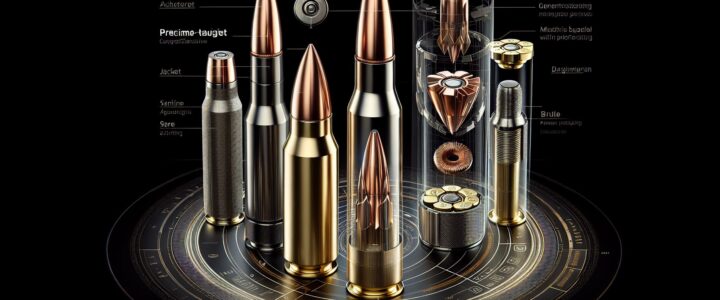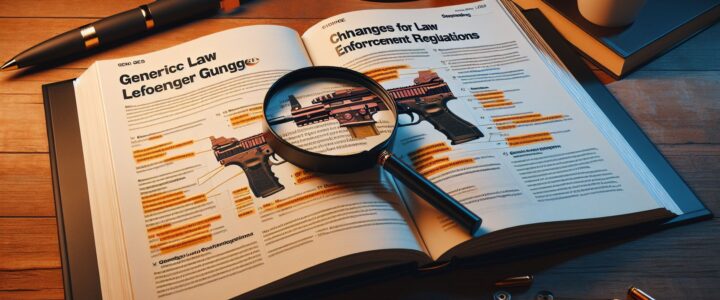For precision shooters looking to elevate their long-range game, the Hornady A-Tip Match bullet represents a breakthrough in ballistic performance, promising unparalleled accuracy and consistency. Crafted with the most discerning marksman in mind, this ammo review aims to dissect the capabilities and the technology behind one of the most talked-about projectiles in recent firearms news.
The Genesis of the A-Tip Match Bullet
The Hornady A-Tip Match bullet burst onto the scene as an innovation steered by years of development and an unwavering commitment to accuracy. Built specifically for the competitive shooter and precision hunter, Hornady has taken the challenge of aerodynamic efficiency head-on, crafting a projectile that leaves nothing to chance.
The “A-Tip” stands for “Aluminum Tip,” which is the cornerstone of this bullet’s cutting-edge design. The unique selling point is the precision-machined aluminum tip, which is longer than typical polymer tips. This contrasts sharply with conventional thinking in bullet design, where polymer has been the go-to material for high-performance tips.
Exquisite Engineering: The Details That Make a Difference
Each Hornady A-Tip Match bullet is the product of meticulous engineering. The bullet features a perfectly concentric aluminum tip that moves the center of gravity and enhances stability through the use of a more rigid material than polymer. But Hornady’s precision does not stop there. These bullets are sequentially packaged right off the press without being bulk handled or tumbled to ensure that they remain in the same shape they were when they left the manufacturing line.
Furthermore, Hornady has implemented an Advanced Manufacturing Process (AMP) for the bullet jacket, which results in near-zero wall thickness variation. In a field where every micrometer counts, this level of consistency is invaluable. The ogive, bearing surface, and boattail are all tailored for the tightest possible groupings.
Performance in Practice: Beyond the Bench
For those in the know, ballistic coefficient (BC) is a crucial figure—a scientific measure of a bullet’s efficiency in flight. Hornady’s A-Tip bullets boast an impressively high BC, which translates to less wind drift and drop, as well as increased downrange velocity and energy retention.
But the real proof of the A-Tip’s worth is in its actual shooting performance. Multiple firearms news outlets and independent reviews report exceedingly tight groupings at distances exceeding 1,000 yards. Such accuracy is crucial for competitors in long-range shooting disciplines and for hunters who need that one well-placed shot.
Practical Considerations: Worth the Investment?
With its advanced design and impressive track record, the Hornady A-Tip Match bullet is a premium choice. Unsurprisingly, it comes at a premium price, which may place it beyond the range of casual shooters who do not require the utmost in precision.
Then there’s the consideration of barrel wear. With a harder tip and possibly tighter bearing surface tolerances, could the A-Tip Match bullet potentially accelerate barrel wear? While anecdotal evidence suggests negligible differences, it’s a factor that high-volume shooters may wish to consider.
Caliber Choices: Meeting the Needs of a Diverse Audience
Recognizing the diverse preferences within the shooting community, Hornady has made the A-Tip Match bullets available in several calibers and grain weights to suit a variety of firearms and shooting applications. From the reliable 6mm through to the formidable .338, there is an A-Tip bullet designed to optimize the ballistics of the chosen round.
Conclusion: A-Tip Match Bullet, Reshaping Precision Shooting
In a market saturated with choices, the Hornady A-Tip Match bullet stands out as a true innovator. From its aluminum-tip technology to the unmatched manufacturing precision, this bullet is reshaping the expectations of what precision shooting can be. For the shooter willing to invest in their accuracy, the A-Tip Match bullet is less of a purchase and more of a commitment to excellence.
Its presence and performance are a prominent feature in contemporary firearms news, leading to much discussion about the future of bullet design. As we have seen, the A-Tip is not without its potential concerns, but it’s also quite clear that for those seeking the pinnacle of precision, the Hornady A-Tip Match bullet is a game-changer that warrants the attention it’s receiving.
As we continue to navigate the evolving landscape of ammunition technology, the A-Tip Match bullet serves as evidence of the relentless pursuit of perfection. It is a reminder to firearms enthusiasts everywhere that innovation is alive and well in the ammunition industry, and Hornady is spearheading that charge.





